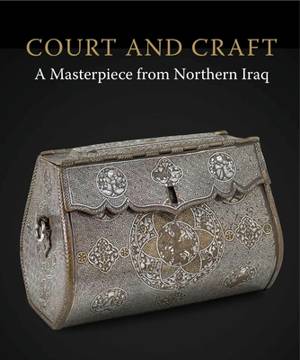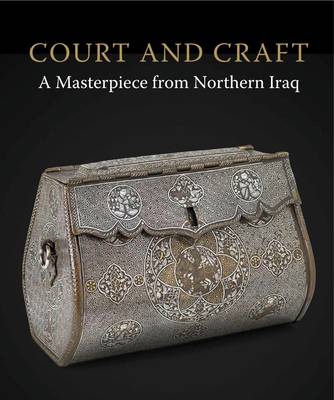
- Afhalen na 1 uur in een winkel met voorraad
- Gratis thuislevering in België vanaf € 30
- Ruim aanbod met 7 miljoen producten
- Afhalen na 1 uur in een winkel met voorraad
- Gratis thuislevering in België vanaf € 30
- Ruim aanbod met 7 miljoen producten
Zoeken
Court and Craft
A Masterpiece from Northern Iraq
Robert Hillenbrand, Charles Melville, Marianna Shreve Simpson, Rachel Ward
Paperback | Engels
€ 40,95
+ 81 punten
Omschrijving
Accompanying a major scholarly exhibition at The Courtauld Gallery, this book explores one of the most beautiful and enigmatic objects in The Courtauld's collection: the so-called 'Courtauld wallet', a brass container richly inlaid with gold and silver, imitating a lady's textile or leather bag, and probably made in Mosul in northern Iraq around 1300. No other object of this kind is known. Decorated all round with courtly figures and on the top with an elaborate banqueting scene featuring an enthroned couple, it has long been recognized as a masterpiece of Arab metalwork. Yet, despite the superb quality of its design and craftsmanship and its status as a unique object, this exceptional metalwork bag has never been properly published. Thus it remains little known outside a small circle of specialists, and little understood even within that circle. Encompassing a variety of multidisciplinary essays by distinguished historians and art historians - on subjects ranging from music at the Mongol court, Mosul under Mongol governorship and Mongol marriage customers to the role of women under the Ilkhanids - this publication aims to explore the origins, function and iconography of this splendid luxury object as well as the cultural context in which it was made and used. It will bring together other images of enthroned Mongols with female consorts, as well as scenes of hunters, revelers an musicians in a variety of media, including illustrated manuscripts, ceramics, textile, and metalwork. By presenting the bag alongside carefully selected contemporary material, it will provide an insight into courtly life under the Mongols in the newly conquered areas of their empire, and will also provide an unrivaled opportunity to investigate the inlaid brass tradition in Mosul after the Mongol Conquest. Objects made before and after this seismic event will be reproduced side by side to demonstrate how the Mosul metalworkers adapted their work for their new patrons.
Specificaties
Betrokkenen
- Auteur(s):
- Uitgeverij:
Inhoud
- Aantal bladzijden:
- 176
- Taal:
- Engels
Eigenschappen
- Productcode (EAN):
- 9781907372650
- Verschijningsdatum:
- 12/03/2020
- Uitvoering:
- Paperback
- Formaat:
- Trade paperback (VS)
- Afmetingen:
- 213 mm x 257 mm
- Gewicht:
- 680 g

Alleen bij Standaard Boekhandel
+ 81 punten op je klantenkaart van Standaard Boekhandel
Beoordelingen
We publiceren alleen reviews die voldoen aan de voorwaarden voor reviews. Bekijk onze voorwaarden voor reviews.











